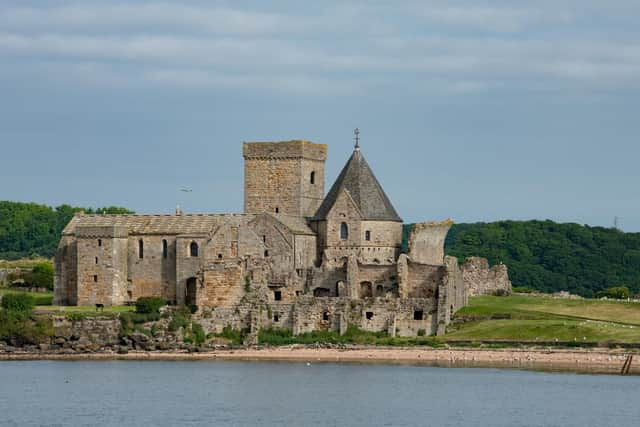Inchcolm Abbey to welcome visitors this Easter weekend
and live on Freeview channel 276
Inchcolm Abbey is a seasonal site which is closed every year between October and March.
In January 2022, inspections were carried out as a part of Historic Environment Scotland’s high level masonry programme.
Advertisement
Hide AdAdvertisement
Hide AdSurveyors were tasked with looking at the effect of climate change, in combination with other factors, on historic sites, including the Abbey.


In June 2022 the site partially re-opened and last year tourists were once again able to visit the partially re-opened site from April to September for the summer season.
An Historic Environment Scotland spokesperson said: “More recent conservation works have begun to address some of the restrictions we have on site at present, including completion of a scheme of repointing and consolidation to allow access to the walled garden to the west of the Abbey and access to the Hermit's Cell.
“These works are slightly behind programme due to the recent severe weather events.
Advertisement
Hide AdAdvertisement
Hide Ad“However, we are confident additional areas of the site will be accessible to visitors – if not in time for its scheduled re-opening at the end of March, then soon after.
“Preparatory works by our monument conservation team for re-opening are in progress, including a decoration refresh to the shop and toilets.
“We are looking forward to welcoming visitors back to enjoy Inchcolm Abbey from Friday, March 29, to coincide with the start of the Easter holidays.”
Inchcolm means Colm’s Isle, yet the Iona of the east has no known link to the living St Columba.
Advertisement
Hide AdAdvertisement
Hide AdA dramatically sited abbey complex – Scotland’s best-preserved group of monastic buildings – dominates the island.
The Augustinian canons settled here in the early 1100s, to enjoy the island’s peace and isolation. But Inchcolm’s Firth of Forth location also made it a target. English naval raids were common during the wars with England from the 1300s to the mid-1500s.
The brethren spent more and more time ashore in Fife, until the Protestant Reformation of 1560 finally brought monastic life to an end.
Inchcolm continued to serve in the defence of the country right up to the Second World War, being heavily fortified in the early 1900s to help defend the Forth Bridge, Rosyth Naval base and Edinburgh.
Advertisement
Hide AdAdvertisement
Hide AdThe island’s remains testify to this history of conflict as well as the history of the medieval church in Scotland. It is said that the island retreat was home to a hermit before the foundation of the abbey. Inchcolm’s oldest relic is a 10th-century ‘hogback’ tombstone.
Alexander I sheltered here during a storm in 1123 and resolved to build a monastery in thanks for his life being saved. He died in 1124 before being able to keep his promise so his brother, David I, invited Augustinian canons to establish the island priory. Inchcolm was raised to full abbey status in 1235.
The abbey church was enlarged to the east around 1265. In the 1400s, a new church was built and an abbot’s residence created above the original church.
The choir of the 13th-century church became the nave of the later church and is now mostly wall footings. But a striking fresco painting of a funeral procession, dating from the 1200s, survives in a tomb recess.